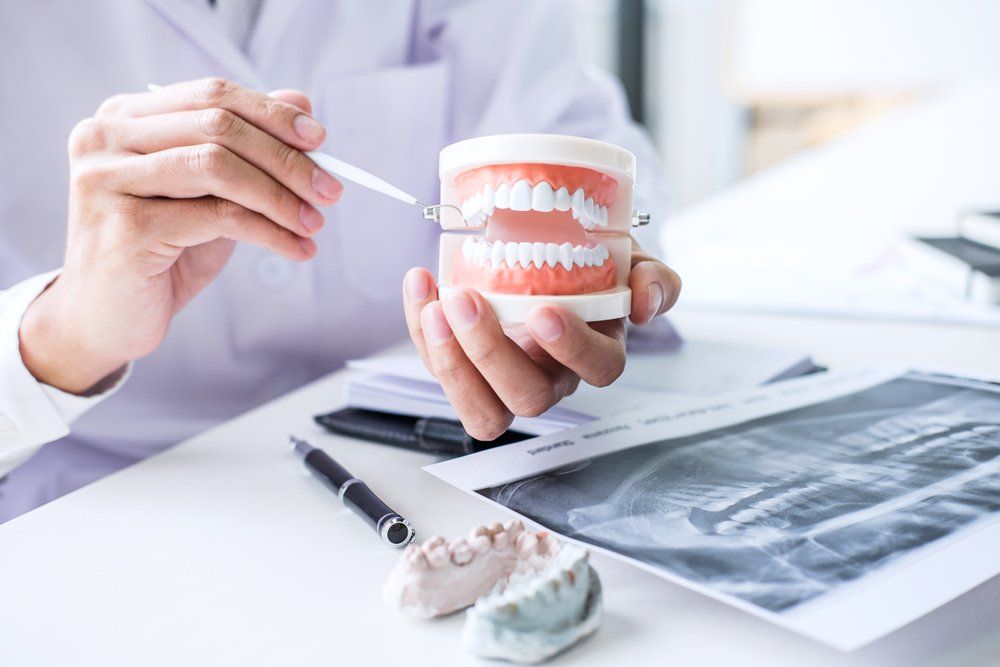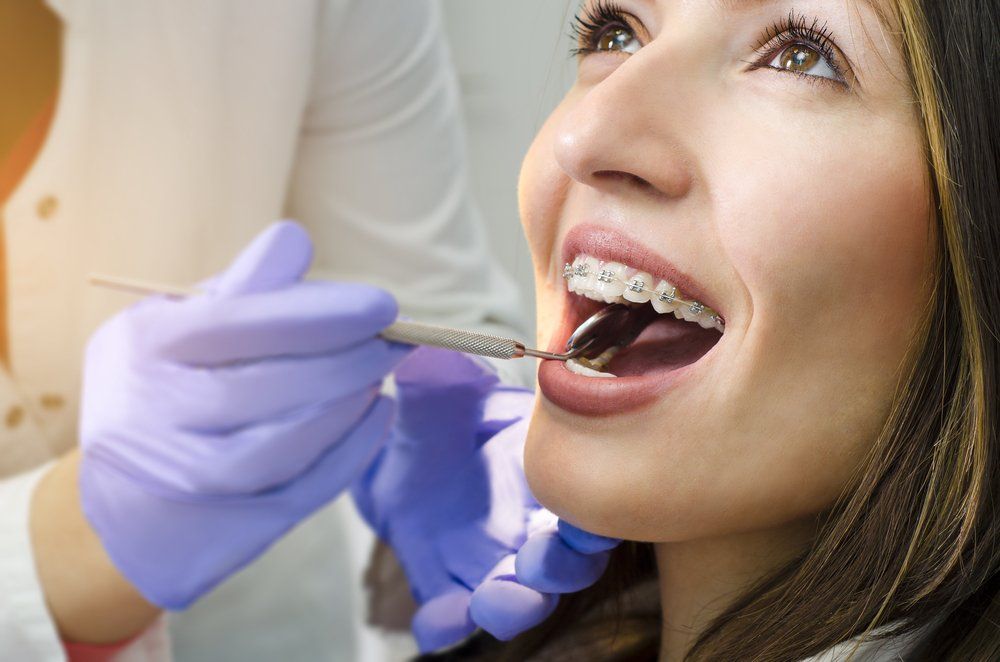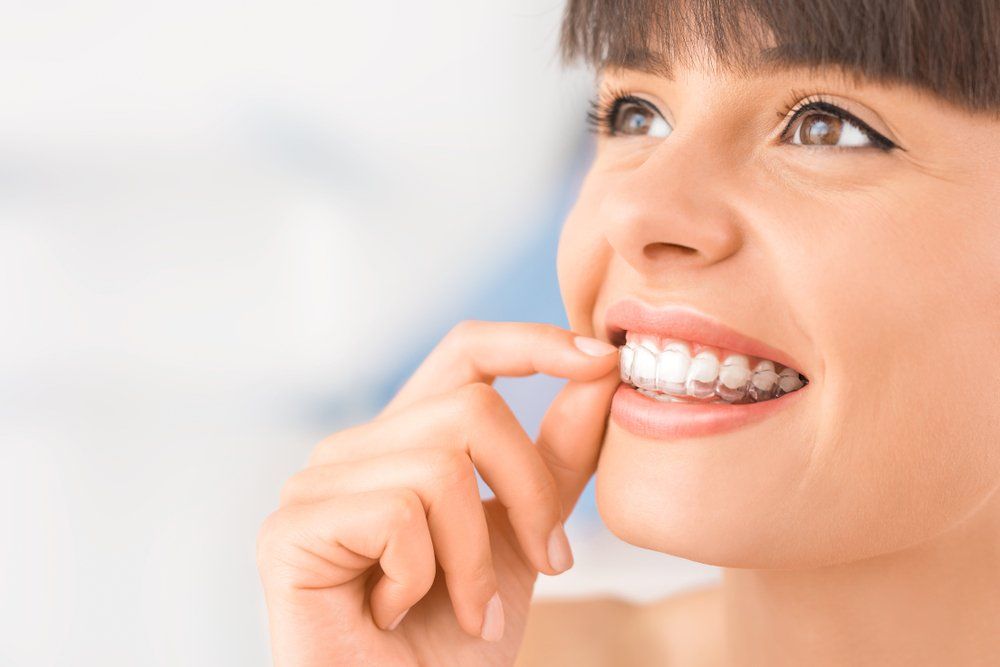Getting a Straighter Smile: When To Consider Orthodontic Care

Smiling is one of the best feelings, so what should you do when you feel embarrassed about your smile? Crooked, crammed, or painful teeth can be a constant source of discontent, both in appearance and how they function. Orthodontic treatment can help patients of all ages get a straighter, photo-friendly smile (and improve your oral health too). When teeth are straight, they are easier to clean and less likely to experience decay or injury. If you are dissatisfied with the sight and bite of your teeth, then it might be time to think about orthodontic treatment.
4 Reasons You Might Need Orthodontic Treatment

Malocclusion
How the teeth and jaw are positioned has a telling effect on your bite, influencing how the top and bottom teeth come together. Teeth that fail to fit together properly make for a poor bite, or what is referenced as malocclusion. Several issues, such as missing, crooked, crowded, or protruding teeth, as well as sucking on a thumb or finger, can directly contribute to a bad bite. Over time, a bad bite can cause some teeth to wear down and create chewing difficulties with certain foods because the products are not being broken down sufficiently before digestion. Muscle tension and discomfort are also frequently experienced, while teeth that stick out are more susceptible to chipping or breaking. Crowded and crooked teeth, due to representing a tougher cleaning task, are more likely to suffer from cavities and gum disease. Whether you have an overbite, underbite, crossbite, or an open bite, an orthodontist can be of tremendous assistance.
Jaw Pain & Headaches
Tooth grinding, also known as bruxism, can create uncomfortable symptoms, especially when it occurs after your head hits the pillow at night (sleep bruxism). Unconsciously, you can clench your teeth during the day or night, which can result in a sore jaw, stiff neck, and irritating headaches. Misaligned teeth are associated with bruxism, so if you are consistently waking up with any of these symptoms, consult with an orthodontist immediately. Left untreated, this condition can severely harm your teeth.
Gum Disease
As mentioned, misaligned teeth present unfavourable brushing circumstances within your mouth, essentially rolling out the welcome mat for gum disease to gain a stranglehold on your oral health. Excess plaque build-up inflames the gums, leading to gum disease that is often linked with heart disease, stroke, diabetes, and a host of other health conditions. Seek out orthodontic care if you notice any of the following symptoms typically found in gum disease: swollen or puffy gums, bleeding gums, tender gums, bright red or purplish gums, receding gums, painful chewing, pus between your teeth and gums, bad breath, loose teeth or loss of teeth, new spaces between your teeth, and any alteration in how your teeth fit together.
Speech Difficulties
Speech impediments can be caused by misaligned teeth, with lisping or whistling being the most prevalent, as your upper teeth overlap with the bottom set. And misaligned teeth can impact the placement of your tongue, allowing air to escape and produce that whistling sound. Also, because the tongue is restricted and unable to move about freely, patients might slur their words. Orthodontic care can be beneficial for all of these side effects of misaligned teeth.
Most Common Types of Orthodontic Treatment

Traditional Braces
Comprised of brackets that are affixed to the teeth and wires that are threaded through slots in the brackets, traditional braces are one treatment option. Wires are held to brackets, generally formed of stainless steel, by tiny rubber bands, and the former is made of metal alloys to ensure a constant, gentle force in tooth movement. Ceramic braces, another choice for patients, are tooth-colored and affixed to the teeth, with wires threaded through slots similarly. For these braces, brackets are made of ceramic or porcelain materials. Self-litigating braces, of the ceramic or metal variety, are two additional choices with built-in clips securing the wires to the brackets.
Clear Aligners (Invisalign)
Aligners are clear, thin trays that can be likened to plastic, forming around a patient's teeth. A series of aligners are created, each intended to be worn for two to three weeks to gradually shift the teeth, and the patient is responsible for putting in and removing them. Meals, brushing and flossing all entail the patient removing aligners beforehand. Case to case, the number of aligners necessary to correct misaligned teeth will vary and be based on the patient's particular orthodontic needs.
Retainers
Removable retainers are thin, clear, slightly flexible, plastic-like materials, that fit the precise shape and placement of your teeth. Fixed retainers are at your disposal, too, though both will effectively hold the teeth in their new positions once the active orthodontic treatment is completed. As time progresses, the newly formed bone will harden around your teeth, and, for your part, all you have to do is follow the directions and wear them for the appropriate duration. Certain patients might be urged to wear retainers on a full-time basis for the first six months that follow active treatment, then limit their use to night-time only.
Elastics
Tiny rubber bands that apply additional force to a tooth or teeth in a fashion that braces cannot manage on their own, elastics shift your teeth into their ideal positions. Small hooks are utilized as attachment points on the upper and lower brackets, while the configuration of the elastics can be vertical or diagonal. Depending on the patient's needs, an orthodontist will prescribe a specific timeline for wearing elastics and one mustn't overdo it. Wearing the elastics more than the orthodontist advised will put excess force on the teeth that can be detrimental.
Are You Ready to Straighten Your Smile with Orthodontic Treatment?

Our dental team will notice any misaligned teeth during a routine oral examination and, if the teeth fail to come together properly, he or she will likely suggest that you see an orthodontist. After an initial consultation that consists of an oral exam, dental X-rays, photographs of your face and smile, panoramic X-rays of the face and head, and impressions to create molds of the teeth, your orthodontist will decide how to best proceed with your treatment.



